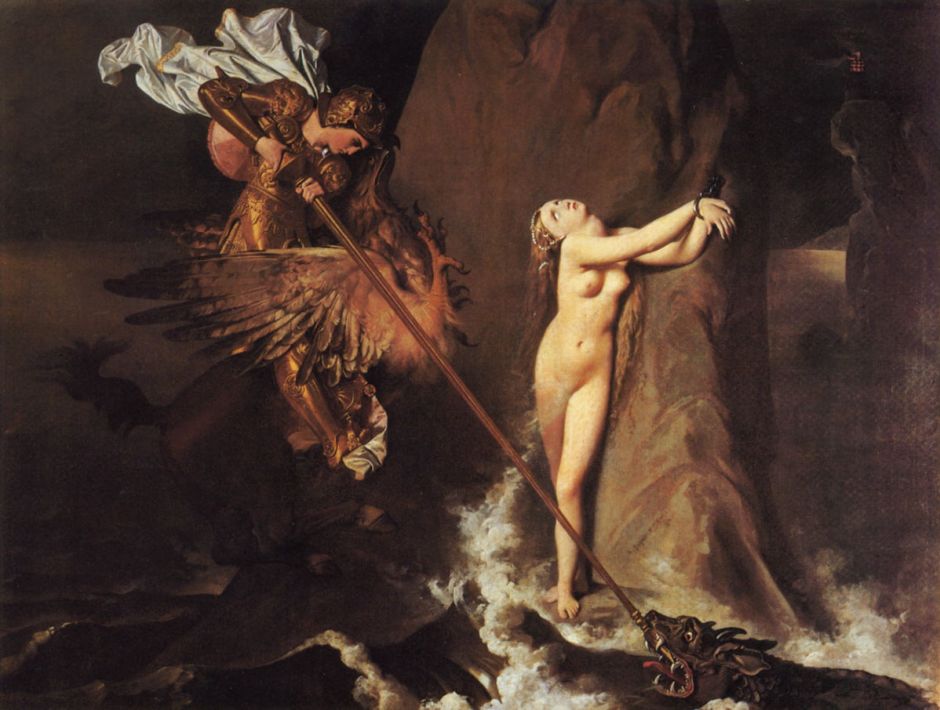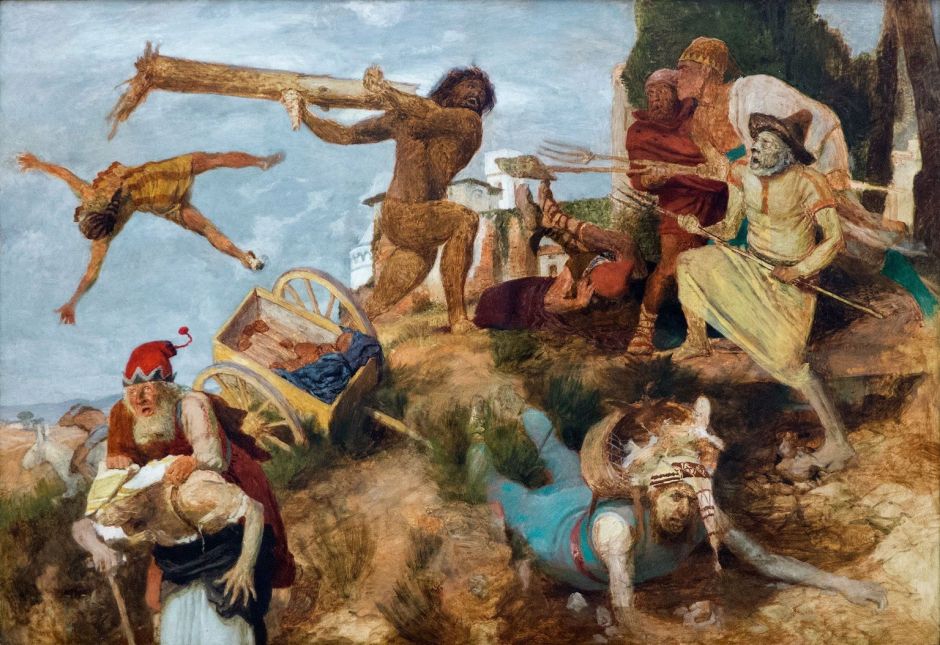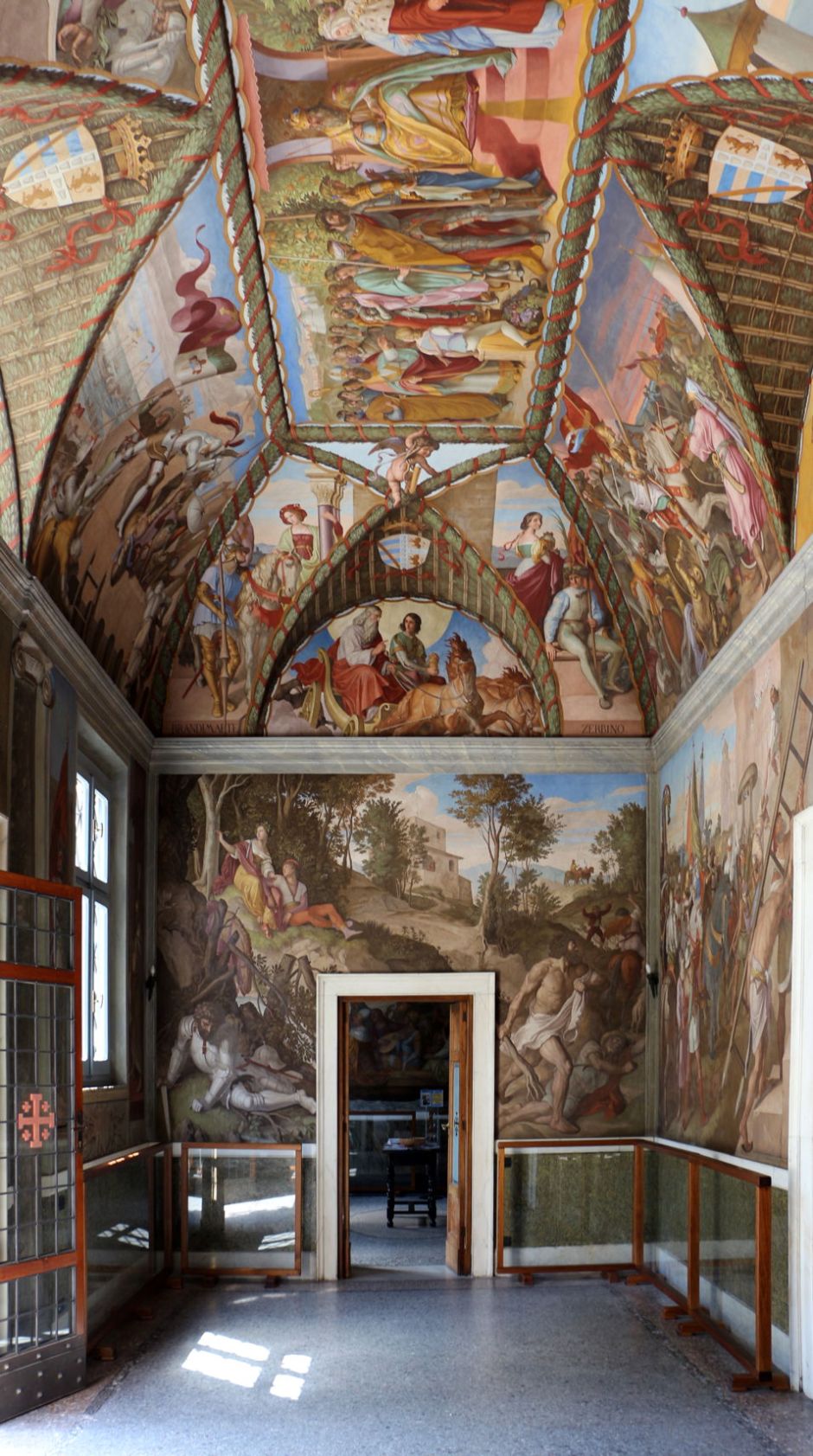Until around 150 years ago, one of the most widely read books in Europe was an epic poem by the Italian Ludovico Ariosto, Orlando Furioso – literally translated as Raging Roland/Orlando. If you enjoy looking at and reading paintings from before 1850, you’re almost bound to come across examples which show stories from this poem. Yet today, outside Italy, the book is almost unknown, and those paintings have become unreadable. This new series attempts to address that by summarising the story and showing a selection of the many paintings and prints which are based on it.
Ariosto was born in Reggio Emilia, a city in central north Italy, in 1474, two centuries after Dante was born, but only a couple of decades following the birth of Leonardo da Vinci. Ariosto’s early writing was noticed by a cardinal from the aristocratic d’Este family who intermittently ruled Reggio. The cardinal appointed him to his household, and from then on Ariosto enjoyed patronage from the d’Estes.

The cardinal’s older sister Isabella d’Este is known as the First Lady of the Renaissance for her extensive patronage and support. Leonardo da Vinci completed this chalk drawing of her shortly after he had painted The Last Supper. Ariosto and the cardinal fell out in 1518, but the cardinal’s brother the Duke of Ferrara took the poet under his patronage instead.
Ariosto is thought to have started work on Orlando Furioso in 1506, and published its first forty cantos in 1516. He continued to work on it until his death in 1532, following which it was published in its current form with forty-six cantos in all.

By about 1512, he was already sufficiently celebrated as to appear in Vincenzo Catena’s Virgin Mary and Child. The figures shown, from the left, are Joseph, John the Baptist, the Virgin Mary and infant Christ, Saint Catherine of Alexandria, Saint Louis of Toulouse, and kneeling at the front right Ludovico Ariosto. Illustrious and holy company indeed for a young poet.
Among Ariosto’s early enthusiasts was Queen Elizabeth I of England, who commanded the writer John Harington to translate it into English for her, then refused him at court until he had finished. Orlando Furioso was a major influence on Edmund Spenser’s epic The Faerie Queene, and on Torquato Tasso’s Jerusalem Delivered, William Shakespeare used one of its plots in his play Much Ado About Nothing, and most recently it has been an inspiration to Jorge Luis Borges and Salman Rushdie, as well as fantasy novels such as L Sprague de Camp and Fletcher Pratt’s The Castle of Iron.
Orlando Furioso is perhaps the original tale of knights in shining armour, about love and – quite candidly – sex, amid an intricate web of sub-plots involving fantastic beasts such as hippogriffs and orcs, knightly battles and wars. From the outset, it is a wide screen production with a cast of thousands: Barbara Reynolds’ list of characters and devices runs to no less than eleven pages. Its action ranges across the whole of Europe, into the Middle East, and up to the moon and back.
Set in the time of the Emperor Charlemagne, it has three major influences: Carolingian legend, Celtic/Arthurian legend, and the classical mythology of Rome and Greece. Thus its literary origins include the Chanson de Roland, Orlando being an Italianised version of his name, contemporary retellings of Arthurian legend involving Lancelot and Guinevere, Virgil’s Aeneid and Ovid’s Metamorphoses.

One of the major sub-plots within the epic is the tale of Ruggiero (Roger) and Angelica, in which the knight is out riding on his hippogriff when he happens on the damsel chained to a rock on the Isle of Tears. She has been abducted and stripped, left as a sacrifice to a sea monster. Ingres’ famous painting from 1819 of this scene shows Angelica’s head cast back almost unnaturally in her pleading look towards Roger, as the monster appears from the sea.
This is a re-telling of the myth of Perseus and Andromeda, of course, and Ingres’ painting so pleased King Louis XVIII that it was purchased for the monarch and installed in his Palace at Versailles.

Edmund Spenser transferred that re-telling into The Faerie Queen as the story of Britomart (knight) and Amoret (damsel), which was then painted by William Etty as Britomart Redeems Faire Amoret (1833), and may even have induced John Millais to attempt his one and only female nude, in The Knight Errant (1870).

The Swiss Symbolist and narrative painter Arnold Böcklin (1827–1901) was another fan of the stories in Orlando Furioso. One of his last works, Orlando Furioso completed just before his death in 1901, shows Orlando at the height of his madness – the result, inevitably, of love.

Böcklin’s first painting of a scene from this epic was probably his Roger freeing Angelica from 1873, which provides a composite image of the moments just before Ruggiero swings into action to rescue Angelica from a remarkably playful-looking monster.

Sebastiano Ricci shows another of Angelica’s relationships in his painting of Angelica and Medoro from about 1716. Here Medoro engages in the age-old practice of carving his name and that of his partner on a tree.

That is remarkably similar to the much older legend depicted by Jacob de Wit in his painting of Paris and Oenone (1737), which is based on Ovid’s Heroides.

Angelica’s busy love life also attracted the attention of Peter Paul Rubens, who in 1626-28 painted Angelica and the Hermit – one of the epic’s more humorous stories, in which the hermit’s lust far exceeds his capability.

Unlike many later epics which are dominated by active men, Orlando Furioso is rich with accomplished female knights, among them Marphise. In Eugène Delacroix’s late career (1852), he painted the story in which Marphise unseats a man, Pinabello, from his mount after his lady had mocked the older woman who is Marphise’s companion. As Pinabello lies flat out on the ground in the distance and his horse gallops off into the forest, Marphise makes his lady strip to provide elegant clothes for her companion.
Tragically, over the last 150 years, Orlando Furioso has lapsed into obscurity, and the context of these wonderful narrative paintings has become opaque. In re-telling Ariosto’s epic, I have another series of superb engravings made of Gustave Doré’s illustrations to act as the backbone, as well as at least three sets of frescoes.

Of those frescoes, the ‘stanza’ painted in the Casa Massimo in Rome by Julius Schnorr von Carolsfeld (1794-1872) is by far the most extensive. They are also only a few doors away from those showing Dante’s Divine Comedy.
Articles will be concluded with outlines of the artists featured, and a brief reminder of each character involved in that episode, so you can keep track of who’s who.
I hope that you will join me in discovering the interwoven stories of Ariosto’s epic, and seeing all those paintings in context.
References
Wikipedia on Ariosto
Wikipedia on Orlando Furioso
Barbara Reynolds (translator) (1975, 1977) Orlando Furioso, parts 1 and 2, Penguin. ISBNs 978 0 140 44311 0, 978 0 140 44310 3. Verse translation with extensive introduction and notes.
Guido Waldman (translator) (1974) Orlando Furioso, Oxford World’s Classics. ISBN 978 0 19 954038 9. Prose translation.

